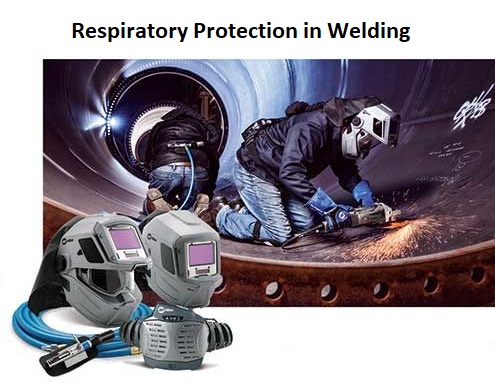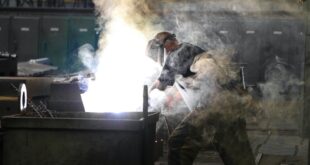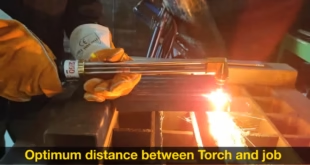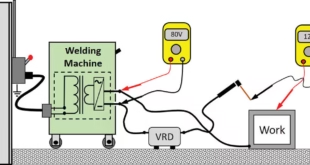Respiratory Protection in Welding
In the world of welding, the fusion of metals brings forth both innovation and structural integrity. However, amidst the brilliance of sparks and molten metal, an invisible adversary lurks – welding fumes and gases. These silent agents, often underestimated, can pose significant health risks to welders. As we venture into the realm of respiratory protection in welding, we embark on a journey to safeguard the very breath of those who shape our world.
Welding fumes, composed of intricate particles and gases, arise from the very essence of the welding process. They are an amalgamation of metal oxides, volatile compounds, and substances that can pose both short-term discomfort and long-term health challenges. Understanding these hazards and their effects is essential to ensuring the well-being of those who engage in this indispensable craft.
In this exploration, we will delve into the depths of welding fumes and gases, unmasking their potential threats, and unveiling the armor that respiratory protection provides. We will navigate the landscape of respirator types, proper selection and usage, maintenance rituals, and the crucial role of training. By the end of this journey, we aim to not only enhance knowledge but also empower welders to breathe easy while pursuing their craft.
Understanding Welding Fumes and Gases
Welding, the art of joining metals through intense heat, gives rise to an array of fascinating sparks and dazzling light. Yet, beneath the captivating spectacle lies a concealed challenge – welding fumes and gases. These byproducts of the welding process are more than just ethereal wisps; they encompass a complex mixture of particulates and chemical compounds that can pose substantial risks to the respiratory health of welders.

Composition of Welding Fumes and Gases
Welding fumes are a combination of tiny solid particles and gases that are generated when the intense heat of welding vaporizes metal and flux materials. The composition of these fumes varies depending on factors such as the type of welding process, the base metals being welded, and the types of consumables used. Common components of welding fumes include metal oxides (such as zinc, chromium, and nickel), gases (such as nitrogen oxides and ozone), and volatile organic compounds.
Health Effects of Welding Fumes
Inhaling welding fumes can lead to a range of health effects, both short-term and long-term. Short-term exposure to high concentrations of welding fumes can cause symptoms known as “metal fume fever,” characterized by flu-like symptoms such as fever, chills, headache, and fatigue. Prolonged and repeated exposure to welding fumes has been linked to more serious health issues, including respiratory irritation, chronic bronchitis, and even long-term lung diseases like pneumoconiosis.
Types of Respiratory Hazards
The captivating dance of sparks in the welding process is accompanied by the release of a hidden danger – respiratory hazards that can be classified into two distinct categories: particulate matter and gases/vapors. Understanding these hazards is crucial to effectively addressing the risks associated with welding fumes.
Particulate Matter
Particulate matter refers to tiny solid particles suspended in the air, which can be inhaled deep into the respiratory system. Welding processes generate various sizes of particulates that can include metallic dust, metal oxides, and even microscopic fragments of the base metal. These particles can become embedded in lung tissues, leading to inflammation, tissue damage, and potential long-term health issues.
Gases and Vapors
Welding operations also produce a variety of gases and vapors that pose respiratory risks. Nitrogen oxides (NOx), for example, are common byproducts of high-temperature welding processes and can irritate the respiratory tract, leading to breathing difficulties. Ozone (O3) is another potential hazard generated by the interaction of ultraviolet (UV) radiation with oxygen and atmospheric contaminants. Prolonged exposure to these gases can have adverse effects on lung function and overall respiratory health.
By comprehending the intricate nature of welding fumes and understanding the diverse respiratory hazards they encompass, welders can begin to appreciate the critical importance of respiratory protection. In the subsequent sections, we will explore the array of respiratory protection equipment available to shield welders from these hidden perils and empower them to breathe easy while pursuing their craft.
Respiratory Protection Equipment
In the realm of welding, where the beauty of craftsmanship meets the power of metallurgy, respiratory protection equipment stands as a formidable shield against the insidious threat of welding fumes. These devices are designed to filter out hazardous particles and gases, ensuring that welders breathe in clean and safe air while they create.
Types of Respiratory Protection Equipment
Respiratory protection equipment comes in various forms, each tailored to different levels of protection and specific welding scenarios. These include:
- Disposable Respirators: Lightweight masks designed for short-term or light-duty welding tasks.
- Half-Mask Respirators: More robust than disposable respirators, these cover the mouth and nose and provide a higher level of protection.
- Full-Face Respirators: These provide complete coverage for the face and are often equipped with replaceable filters to guard against a wider range of contaminants.
- Powered Air-Purifying Respirators (PAPRs): High-performance respirators that use a motorized fan to draw air through filters, providing continuous airflow and enhanced protection.
Filtration Mechanisms
Respiratory protection equipment employs a range of filtration mechanisms to capture and remove harmful particles and gases from the air. These mechanisms include:
- Mechanical Filtration: Physical barriers such as fibers or screens that block and trap particles based on size.
- Adsorption: Absorption of gases and vapors by activated carbon filters, effectively neutralizing chemical hazards.
- Chemical Reaction: Filters designed to chemically react with specific gases, transforming them into harmless compounds.
Selecting the Right Respirator
Choosing the appropriate respiratory protection equipment is not just a matter of convenience; it’s a crucial decision that directly impacts the safety and well-being of welders. Proper selection ensures that the chosen equipment effectively guards against the unique hazards present in each welding scenario.
Factors to Consider
Several factors should guide the choice of respiratory protection equipment:
- Type of Welding Process: Different welding methods produce varying levels and types of fumes and gases.
- Base Metals and Consumables: The composition of materials being welded influences the types of hazards generated.
- Work Environment: Factors such as ventilation and enclosed spaces affect the concentration of airborne contaminants.
- Assigned Protection Factor (APF): APF indicates the level of protection provided by a respirator. Higher APF values offer greater protection.
Fit Testing and Comfort
A properly fitting respirator is essential for effective protection. Fit testing ensures that the respirator forms a secure seal around the wearer’s face, preventing leakage of contaminants. Comfort is also crucial, as a comfortable respirator is more likely to be worn consistently, reducing the risk of exposure.
Training and Education
Proper training on the selection, usage, and maintenance of respiratory protection equipment is paramount. Welders should be educated on putting on and removing the equipment, performing fit checks, replacing filters, and ensuring overall proper usage.
As we venture deeper into the realm of respiratory protection, we arm welders not only with knowledge but also with the tools needed to confront the invisible adversaries that accompany their craft. In the subsequent sections, we will explore the correct procedures for using and maintaining respiratory protection equipment, ensuring that welders breathe freely and confidently as they shape a world of strength and ingenuity.
Proper Use and Maintenance
While the choice of respiratory protection equipment is pivotal, its proper use and maintenance are equally crucial. To ensure optimal protection and prolong the lifespan of the equipment, welders must adhere to specific guidelines and practices.
Wearing and Using Respiratory Protection
Correct usage of respiratory protection equipment involves a series of steps:
- Inspect the equipment for any signs of damage before each use.
- Put on the respirator following the manufacturer’s instructions, ensuring a secure fit and a proper seal.
- Perform fit checks to confirm that the respirator is properly sealed against the face.
- While working, make sure to maintain a good seal and avoid touching the respirator.
Maintenance and Cleaning
Regular maintenance and cleaning are vital to ensure the continued effectiveness of the equipment:
- Replace filters as recommended by the manufacturer or based on usage.
- Clean the respirator according to the provided guidelines, using mild soap and water or approved cleaning agents.
- Store the respirator in a clean, dry, and protected area when not in use.
Regulations and Standards
In the intricate world of welding, where the beauty of craftsmanship meets the precision of science, regulations and standards stand as beacons of guidance. These guidelines not only ensure the safety and well-being of welders but also set the benchmark for industry best practices.
Importance of Welding Regulations
Regulations and standards are crucial for maintaining a safe working environment for welders. They provide a framework for employers and workers to adhere to, ensuring that the risks associated with welding fumes and gases are effectively managed.
Regulatory Organizations
Several reputable organizations set forth guidelines for respiratory protection in welding, including:
- Occupational Safety and Health Administration (OSHA): OSHA provides regulations and standards to ensure safe and healthful working conditions in the United States.
- National Institute for Occupational Safety and Health (NIOSH): NIOSH offers research and recommendations for preventing work-related injuries, illnesses, and fatalities.
- American Welding Society (AWS): AWS publishes codes, standards, and guidelines specific to welding processes, including those related to respiratory protection.
Respiratory Protection Standards
Regulatory standards often encompass:
- Assigned Protection Factor (APF): APF indicates the level of protection a respirator provides, guiding the selection process.
- Maximum Use Concentration (MUC): MUC defines the maximum airborne concentration of a substance a respirator can protect against.
- Fit Testing: Standards outline procedures for fit testing to ensure that respirators fit properly and create an effective seal.
Compliance and Implementation
It is the responsibility of employers to ensure compliance with relevant standards and regulations. This involves providing appropriate respiratory protection equipment, training, and maintaining a safe working environment. Welders, too, play a pivotal role in adhering to these standards to safeguard their own health.
FAQs
Is respiratory protection required for welding?
Yes, respiratory protection is often required for welding due to the potential hazards posed by welding fumes and gases.
What is respiratory protection safety?
Respiratory protection safety involves using equipment like respirators to safeguard against inhaling harmful particles, gases, and fumes during tasks like welding.
What are the main types of respiratory protection?
The main types of respiratory protection include disposable respirators, half-mask respirators, full-face respirators, and powered air-purifying respirators (PAPRs).
What is respiratory protection and its purpose?
Respiratory protection refers to equipment that filters the air to prevent inhalation of hazardous substances. Its purpose is to ensure the safety and health of individuals in environments where respiratory hazards are present.
What are the 3 types of respirators?
The three types of respirators are air-purifying respirators (APRs), powered air-purifying respirators (PAPRs), and atmosphere-supplying respirators (ASRs).
What is an example of respiratory protection?
An example of respiratory protection is a disposable N95 respirator mask, which filters out airborne particles and is commonly used in various industries, including welding.
What are respiratory risks from welding?
Respiratory risks from welding include inhaling metal fumes, toxic gases, and particulates generated during the welding process.
What are the respiratory hazards of welding?
Respiratory hazards of welding include exposure to metal fumes (like zinc, chromium, and nickel), gases (such as nitrogen oxides and ozone), and other harmful airborne contaminants.
What type of welding requires a respirator?
Welding processes that involve the generation of significant fumes and gases, such as shielded metal arc welding (SMAW) or flux-cored arc welding (FCAW), often require the use of a respirator for proper protection.
Conclusion
In the grand tapestry of welding, where creativity and strength merge, respiratory protection emerges as a vital thread that weaves together the safety and well-being of welders. The wisps of welding fumes, once enigmatic and unchecked, are no longer an invisible menace. Through our exploration, we have unearthed the layers of knowledge necessary to safeguard against these insidious particles and gases.
As we conclude this odyssey through the realm of respiratory protection in welding, let us reflect on the significance of knowledge, choice, and responsibility. Armed with an understanding of the composition and risks of welding fumes, as well as the array of protective equipment at their disposal, welders can stride confidently into their workshops. Let us remember that every welder’s breath matters, and every precaution taken is a testament to the dedication of both individuals and the welding community at large.
May this knowledge serve as a beacon of safety, illuminating the path to a future where every welding journey is embarked upon with both creativity and care, shielded by the protection that enables artisans to shape a world of strength and unity.
 Welding of Welders All about Welding and Welders
Welding of Welders All about Welding and Welders



